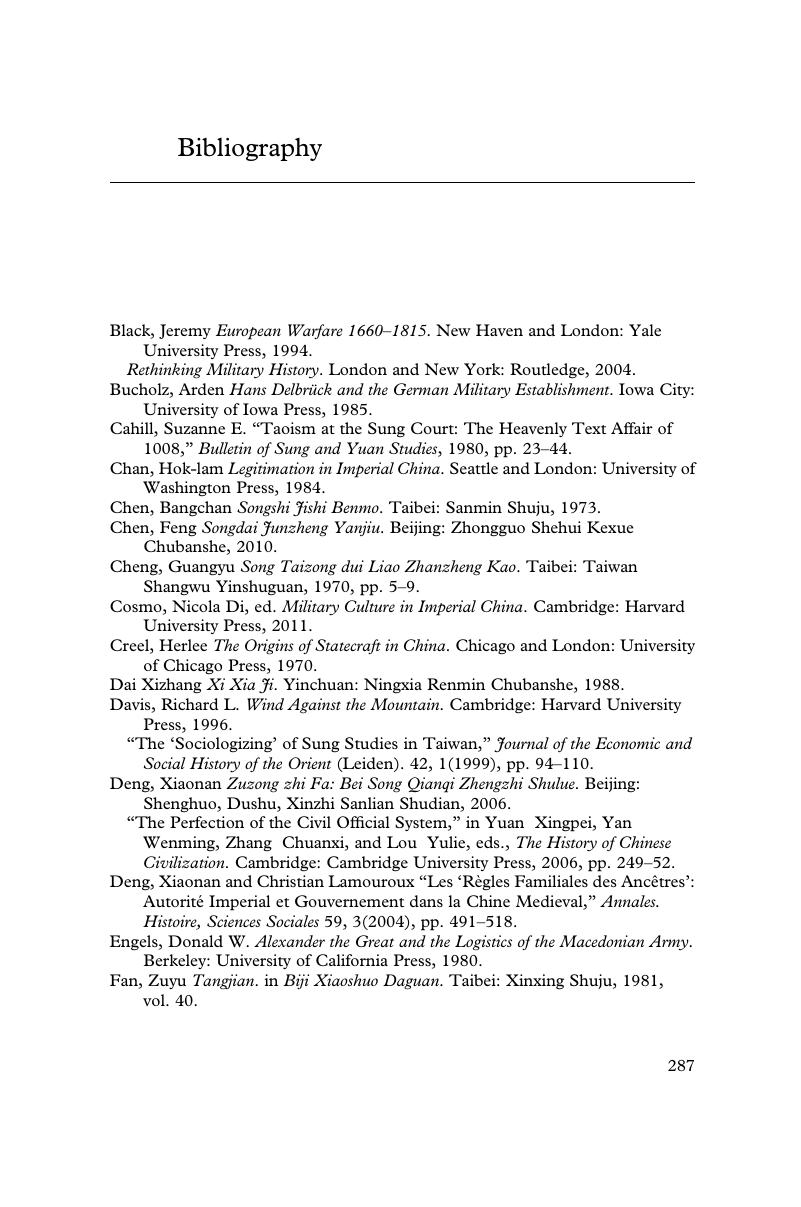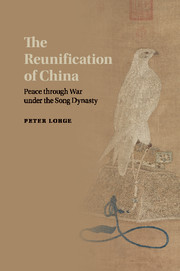Book contents
- The Reunification of China
- The Reunification of China
- Copyright page
- Contents
- Maps
- Book part
- 1 Introduction
- 2 Historiography, methodology, and Song military and political history
- 3 The pivot of the tenth century
- 4 Rebuilding the empire
- 5 The army and the creation of the Song dynasty
- 6 Personal politics and the campaigns of conquest
- 7 Separating war and politics
- 8 Fighting to become emperor
- 9 Failure and rebellion
- 10 The end of the beginning
- 11 Conclusion
- Bibliography
- Index
- References
Bibliography
Published online by Cambridge University Press: 05 December 2015
- The Reunification of China
- The Reunification of China
- Copyright page
- Contents
- Maps
- Book part
- 1 Introduction
- 2 Historiography, methodology, and Song military and political history
- 3 The pivot of the tenth century
- 4 Rebuilding the empire
- 5 The army and the creation of the Song dynasty
- 6 Personal politics and the campaigns of conquest
- 7 Separating war and politics
- 8 Fighting to become emperor
- 9 Failure and rebellion
- 10 The end of the beginning
- 11 Conclusion
- Bibliography
- Index
- References
Summary

- Type
- Chapter
- Information
- The Reunification of ChinaPeace through War under the Song Dynasty, pp. 287 - 292Publisher: Cambridge University PressPrint publication year: 2015



